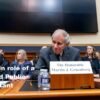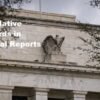Definition of Forced Savings
Forced Savings is a form of saving carried out by a third party, such as a company or government, for the benefit of its employees or the community. The main goal of forced savings is to help individuals accumulate funds consistently without having to think about saving regularly. These savings are generally deducted directly from salaries, wages, or income before being received by the individual. The definition of forced savings is basically a savings system that forces someone to set aside a certain amount of money from their income automatically. Many financial institutions offer forced savings products with various terms and conditions. Although it may seem burdensome, forced savings is actually designed to improve financial discipline and help individuals and families achieve their long-term goals.
On the other hand, voluntary savings is a type of savings carried out consciously by a person or family without any third party intervention. Voluntary savings are based more on individual awareness and need for the importance of saving. Individuals will set aside a portion of their income voluntarily according to the plan or target they want to achieve. The main difference between forced savings and voluntary savings lies in third party intervention and individual awareness. Forced savings are carried out without any initiative from the individual and are imposed by a third party, while voluntary savings are actions carried out consciously and are more flexible. Both have their advantages and disadvantages, but both aim to help individuals achieve their long-term financial goals.
Factors Causing Forced Savings in Fiscal Policy
The first factor causing forced savings in fiscal policy is taxes and levies. Taxes are mandatory contributions imposed on individuals and companies by the government to finance various public needs. Levy is a tariff charged by the government to the public for using public facilities and services. Both have an important role in creating forced savings because they reduce the income available for people to spend or save voluntarily.
Subsidy reduction is the second factor that causes forced savings in fiscal policy. Government subsidies are financial assistance to certain companies or sectors to reduce the prices of goods and services to make them more affordable for the public. Reducing or eliminating subsidies will increase the price of goods, thereby suppressing household consumption and encouraging savings. This is a form of forced savings because the government makes the decision to reduce subsidies, not an individual decision.
Government spending policies can also be a factor in forced savings. Government spending includes infrastructure investment, educational development, health, and other activities that affect the economy as a whole. If the government reduces its spending on these sectors, it will affect people’s purchasing power and their level of welfare. In this situation, people will try to save more to anticipate an uncertain future.
Government debt is the fourth factor causing forced savings in fiscal policy. When the government collects debt to finance a budget deficit, the burden of paying interest and repaying the debt will be borne by society through taxes and levies. Therefore, government debt can cause economic stress resulting in decreased consumption and increased forced savings among the public.
The Impact of Forced Savings on the Economy
Forced saving has a significant impact on consumption and investment in the economy. Since individuals are required to set aside a portion of their income, consumption will decrease overall, which can affect economic growth. However, forced savings also create funds available for investment, either by the government or the private sector. This can increase investment in infrastructure, education, and technology, which can ultimately increase productivity and economic growth. Economic growth can be influenced by forced savings through reduced consumption or increased investment. If forced saving reduces consumption more than is offset by an increase in productive investment, then economic growth will slow. On the other hand, if forced savings are successfully allocated into productive investments that drive long-term economic growth, the negative impact of reduced consumption will be compensated for and economic growth can remain stable or even increase.
Forced savings also has the potential to affect income distribution in an economy. If forced savings were applied proportionally to income, they would probably have a greater impact on individuals with lower incomes, as they would have to adjust their consumption and spending more drastically than individuals with higher incomes. This can lead to greater income gaps between different income groups. Besides its impact on consumption, investment, economic growth, and income distribution, forced savings also affects economic stability. Using forced savings as a source of funds for investments or government programs can reduce budget deficits and reduce dependence on foreign loans. This can keep inflation rates and currency exchange rates stable, as well as increase investor confidence in the economy. However, the impact of forced savings on economic stability is also influenced by how these funds are used. If the allocation of funds is inefficient or there is corruption, then economic stability may not experience significant improvements despite forced savings. Therefore, it is important for the government to manage forced savings funds in a transparent and accountable manner so that the positive impact can be felt throughout the economy.
In the history of fiscal policy, forced savings have been implemented by several countries to deal with certain economic challenges. Forced savings is a government policy that forces its citizens to set aside a portion of their income to be collected in the form of savings that will be used for certain purposes, such as financing war, infrastructure development, or stabilizing the country’s economy. Several countries that have implemented forced savings include Indonesia during the New Order era, Argentina in the early 2000s, and Greece when facing a debt crisis. The success and failure of implementing forced savings varies and depends greatly on the economic context and leadership in each country. In Indonesia, forced savings have succeeded in creating large enough funds to support infrastructure development and industrialization. However, on the other hand, this policy also creates social injustice and is a source of corruption. Meanwhile, in Argentina, forced savings succeeded in reducing hyperinflation but was sidelined after a succession of governments.
Political will is a key factor influencing the implementation of forced savings policies. In the case of Greece, for example, socio-political pressures have meant that the implementation of forced savings has not substantially succeeded in achieving the goal of economic stabilization. Policymakers must navigate political and social constraints in planning forced savings policies to secure public support and ensure transparency and accountability. From the experience of countries that have implemented forced savings, we can draw several important lessons for today’s economy. First, the importance of involving the community in the policy planning process to build public support. Second, fiscal policy must be designed comprehensively and combined with various other instruments in order to achieve economic goals effectively. Finally, in dealing with contemporary problems such as inequality and environmental impacts, economic policy needs to consider the interests of various parties as well as the long-term impacts of the actions taken. Thus, past experience can help us make better decisions for the current and future economy.











